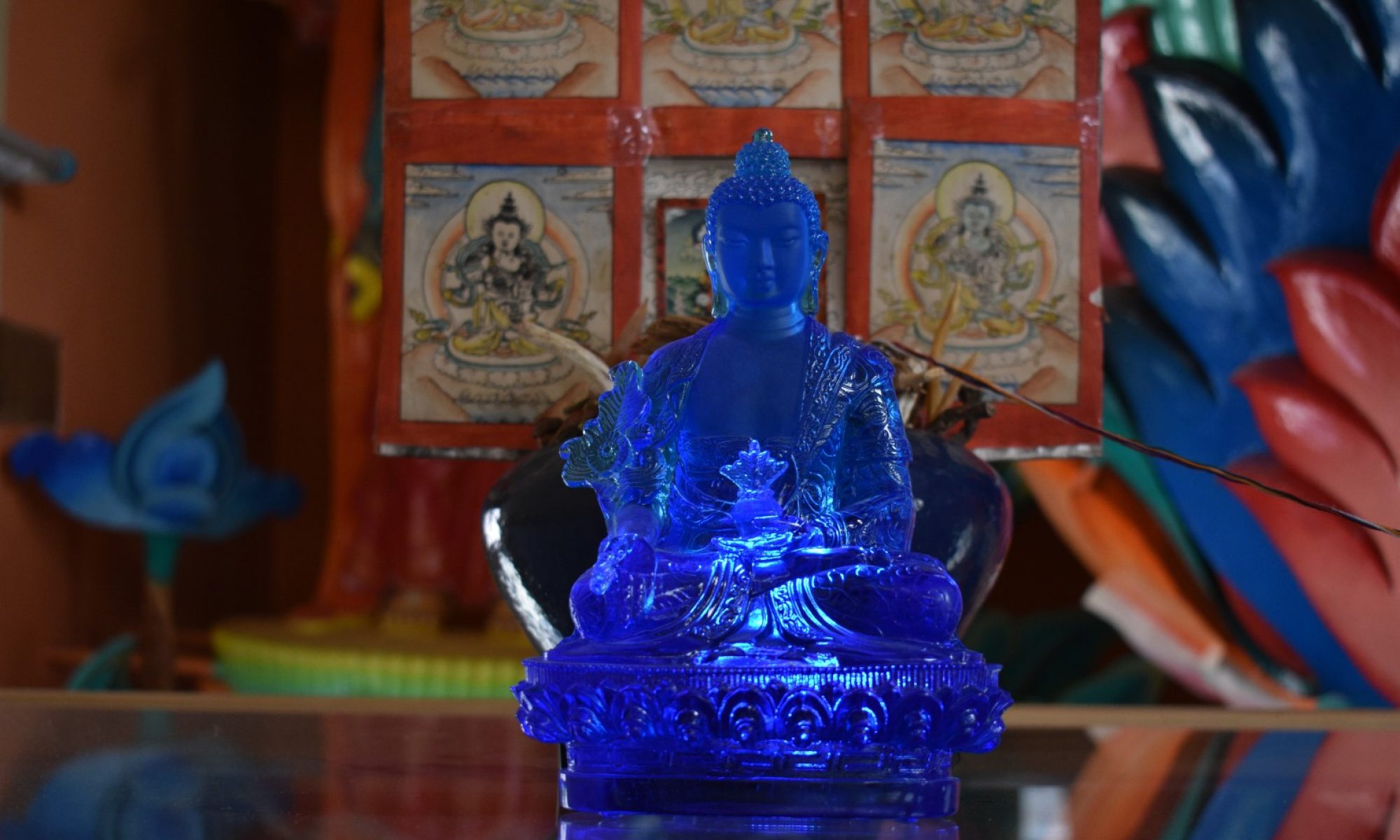Pasang Yonten Arya (Menrampa) is a practitioner, scholar, and teacher of Tibetan medicine educated at Men-Tsee-Khang in Dharamsala, where he served as assistant pharmacist, lecturer, and college principal between 1977 and 1989. After lecturing at the Central Institute for Buddhist Studies (Ladakh, 1981–1991), he moved to Italy, where he heads the New Yuthok Institute and Tibetan Medicine Education center (TME). I have been studying with him since 2012.
In the late spring of 2019, I (Jan) participated in a week-long TME rejuvenation workshop in the Swiss Pre-Alps, together with eighteen other students. It took place in a large chalet on the edge of a quiet idyllic village, enveloped by the sound of a nearby waterfall, green alpine pastures, and pine forest.

Over lunch on arrival day, Dr. Pasang welcomed the students to this ideal place for rejuvenation with the following words:
“This is a workshop. You have to work, you must touch with your hands, body and mind together. You might burn yourself or feel nauseous, whatever, you must do it. It is not enough to look at a video, or to attend a lecture. This is pharmacy. You must work! One, two, three times, then only you begin to understand: ‘Ah, this is the way.'”
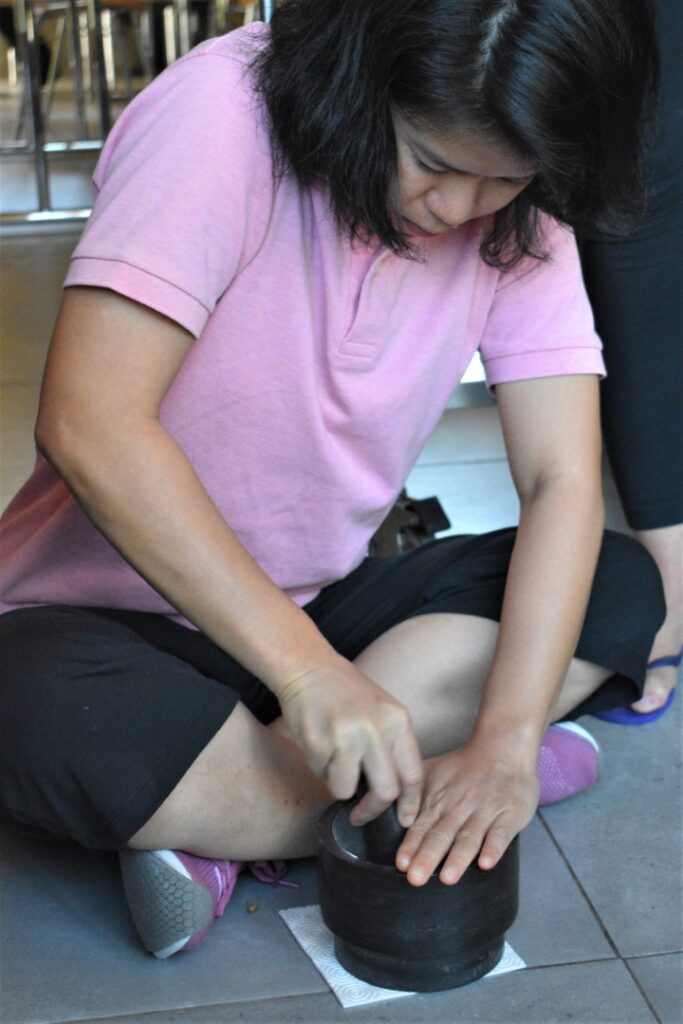
grinding 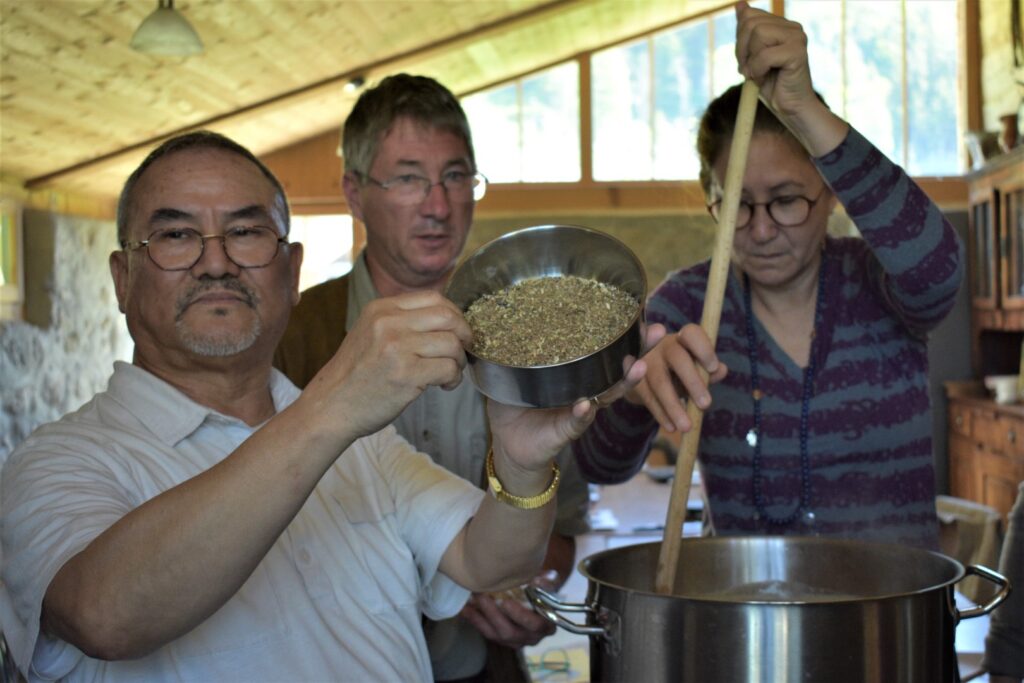
decocting 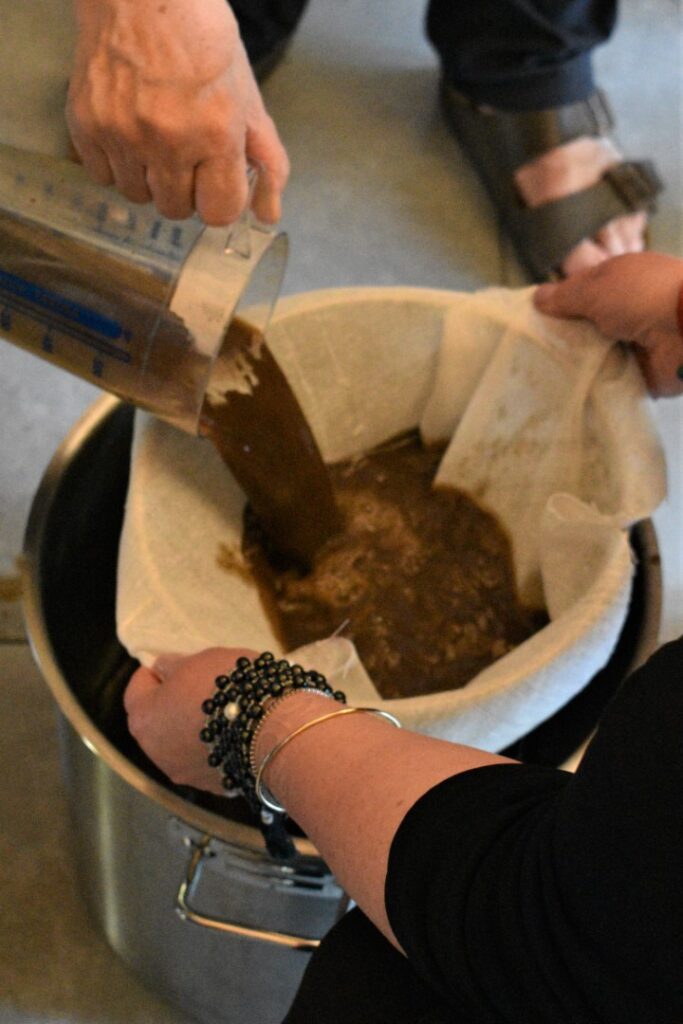
sieving 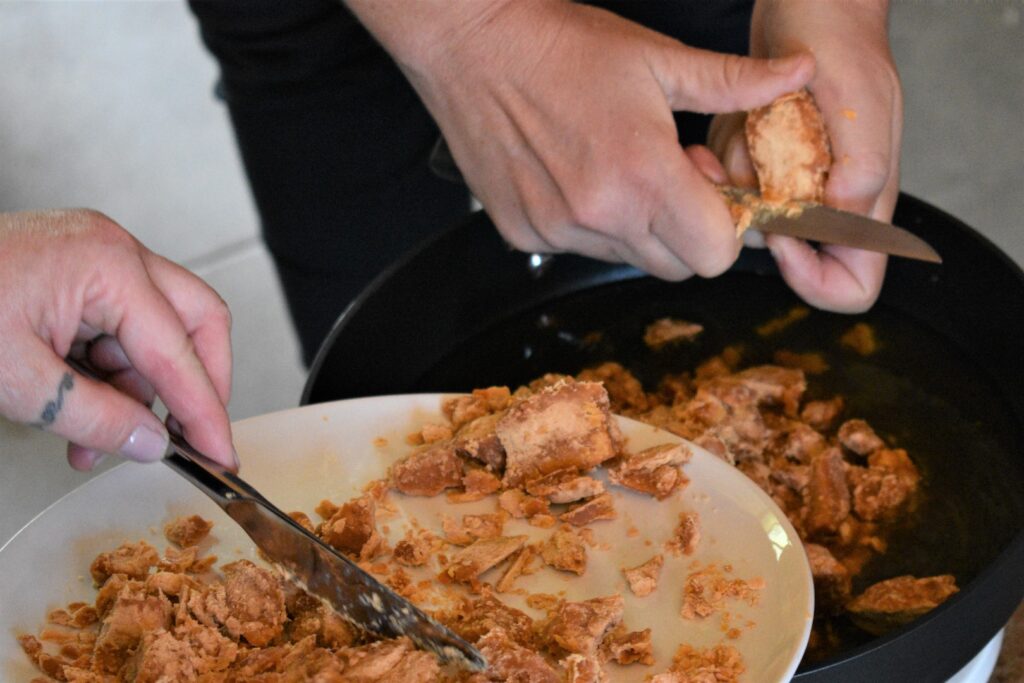
processing extra ingredients (jaggery) 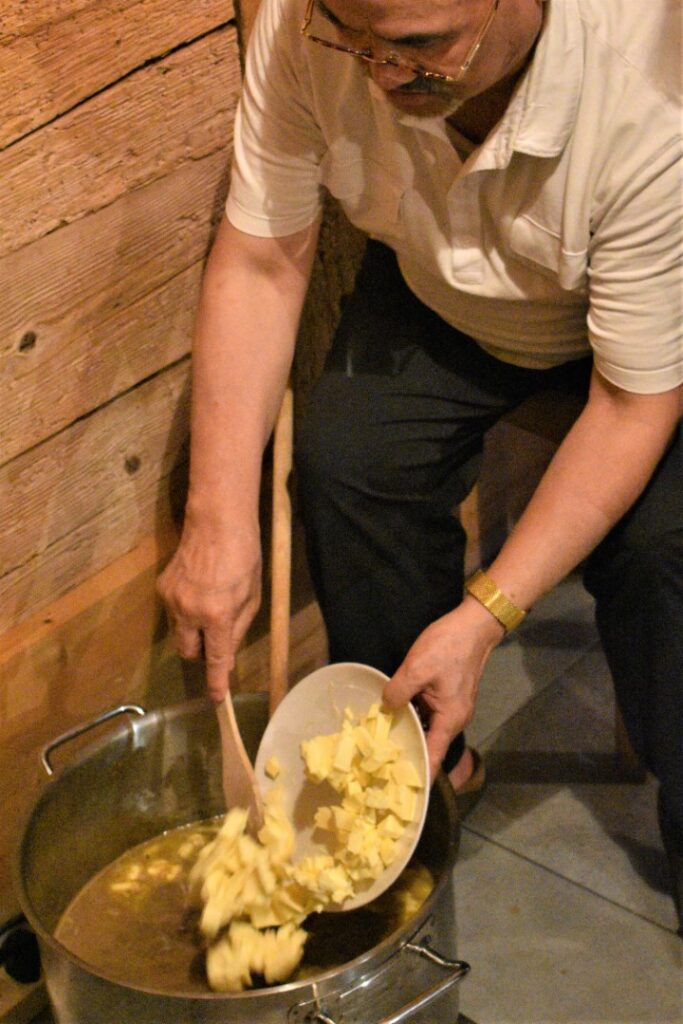
adding butter 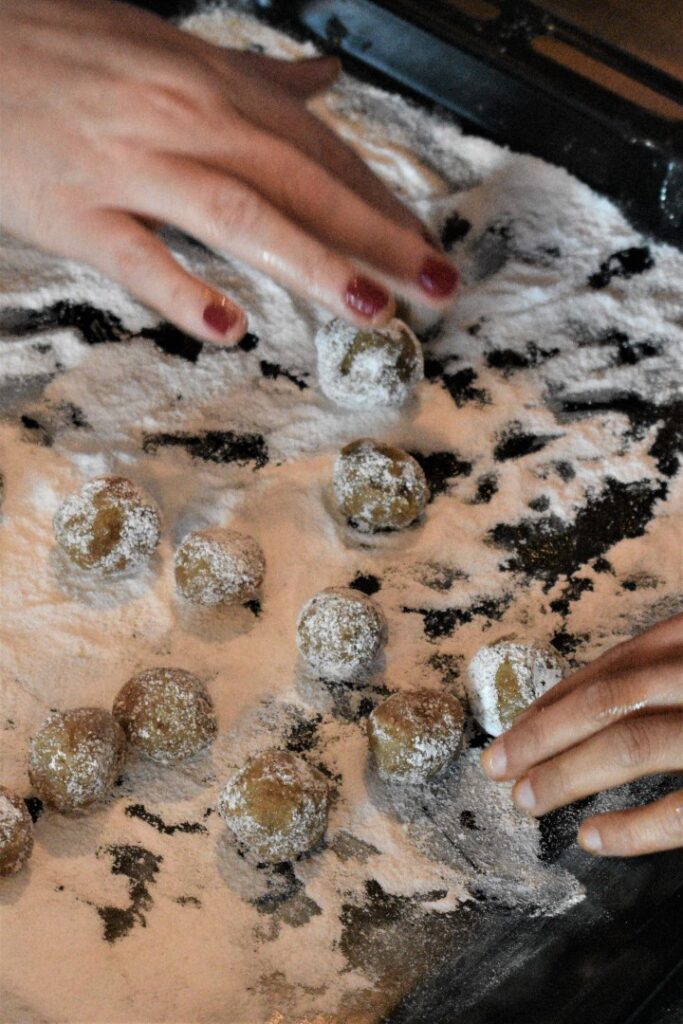
rolling the butter pills
(sugar coating)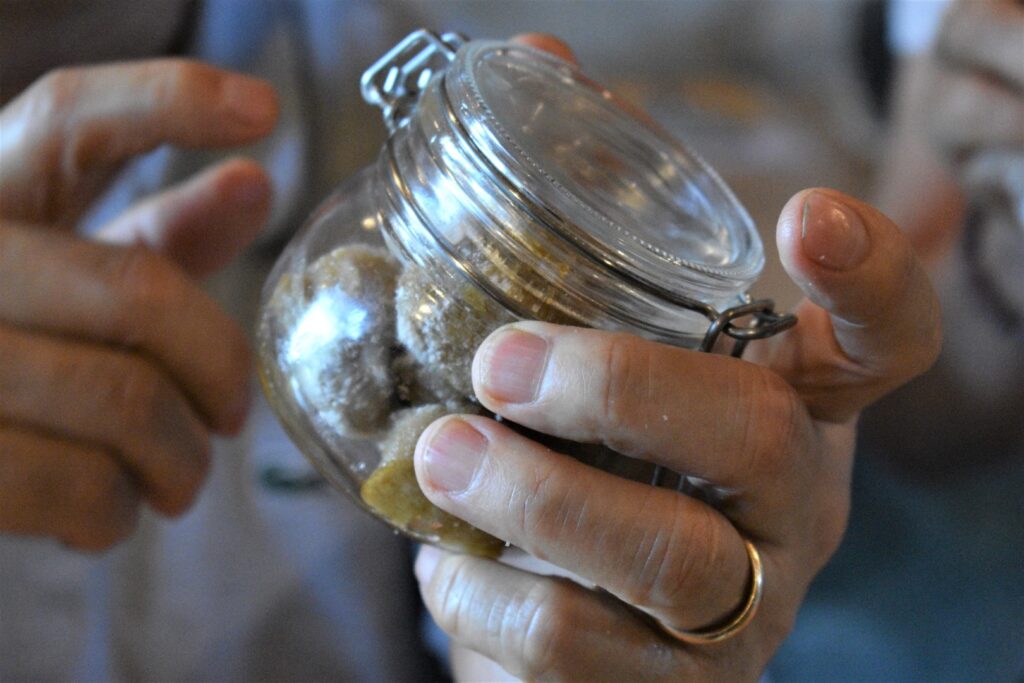
storage in glass jars
Our teacher foregrounded manual work, the senses, practice and experiential knowledge in menjor, the making of medicine. The nourishing qualities of medicinal butter alleviate excess lung (‘wind’) and strengthen the body. Making menmar is excellent for rejuvenation, but without preliminary cleansing there would be little benefit upon taking the medicine: “preparing [fresh] food in a dirty cooking pot, does it make sense or not?,” he commented. Kitchen metaphors, associating cooking with digestion as well as with medicine making, were a recurring theme throughout the workshop.
The butter does not only need to be refined by removing impurities and ‘extracting the essence’ (chülen), it should also be ritually perfected and consecrated. This practice involved visualisation of Buddha Amitāyus (Tshe dpag med) and recitation of a specific mantra, through which the medicinal butter is transformed into nectar. The practitioner visualizes how five-colored nectar light is absorbed from the elements of the ten directions, and again emitted from the medicine, increasing the lifespan of all beings.

In this combined medicinal butter and rejuvenation workshop, I learned both as a practitioner and as an anthropologist engaged in participant-observation. This education through apprenticeship foregrounds the importance of honing skills through interactions with the dynamic properties of materials, and also comes with intriguing analytical questions. To properly study medicine preparation and empowerment, it seems that fieldworkers have few options other than (partially) becoming artisan-practitioners themselves, however inexperienced they may be. In this sense, anthropology is like a craft.
